Pros and Cons of Using a Log Lighter
Are you thinking about installing a log lighter in your wood-burning fireplace or outdoor fire pit and want to learn more before moving forward? There’s no doubt that installing natural gas or propane log lighters for your features means no more fighting with kindling or buying expensive fire starter logs. But how do you know if a gas log lighter is right for you?
A great place to start is looking at some of the advantages and disadvantages of using a gas log lighter for your wood-burning fireplace or outdoor fire pit. To help you decide if a log lighter is the best choice for you, we’re breaking down some of the pros and cons of using a log lighter.
What Is a Gas Log Lighter?
Before we dive into the pros and cons of using a log lighter, let’s quickly go over what a log lighter is and how it works in your fireplace or fire pit.
A log lighter is a wood-burning fireplace accessory that’s powered by a gas source to help you light your firewood logs. A log lighter works much like a normal handheld lighter in it’s designed to light your firewood logs and make starting a fireplace or fire pit simple and quick. Log lighters are connected to an external natural gas or liquid propane gas (LPG) fuel source with lines that run into your firebox.
Gas log lighter bars are securely mounted with brackets and screws into the base of your fire pit or firebox and designed to sit directly under the log grate that holds your firewood logs for burning. It’s important to note that log lighters should always be installed by a licensed gas appliance installer and connected to an appropriate fuel source before putting them to use starting fires.
What a Gas Log Lighter Is Not?
A log lighter is not designed to be a burner system for your wood-burning fireplace or wood fire pit. It’s important to understand that gas log lighters are not designed to constantly burn in your fireplace, and they shouldn’t be used to constantly feed flames to your wood logs or other firewood.
Instead, log lighters are designed to offer homeowners a quick and easy way to get their wood fires burning. Log lighters are meant to be turned off immediately after they help you ignite your logs and get those healthy wood fires burning.
Breaking Down the Pros and Cons of Using a Log Lighter
You can think of log lighters more as alternative fire starters for your wood-burning fireplace or outdoor wood fire pit. They’re designed to cut out the time and work it takes to start a fire the traditional way using kindling and tinder to slowly ignite your wood logs. Having a gas log lighter in your outdoor fire pit or wood-burning fireplace makes starting fires painless and hassle-free.
But that doesn’t automatically make them a good fit for everyone. Here are some of the different pros and cons to consider when deciding if using a log lighter is right for you:
-
Installing a gas log lighter
-
Preparing and starting a gas log lighter
-
Maintaining and caring for a gas log lighter
The areas that make gas log lighters an attractive option for some homeowners might be the reason log lighters are less appealing for others. But we’ll just present the facts -- you be the judge!
Pros and Cons of Installing a Gas Log Lighter
Shopping for a new log lighter is the easy part. There are plenty of pros and cons associated with installing a log lighter that homeowners may not always be prepared for when shopping.
 Pros
Pros
A log lighter offers homeowners a permanent solution for starting fireplace fires. One of the main advantages of a log lighter is it gets mounted into your firebox.
Once a log lighter is installed and connected properly, you don’t have to worry about how long it takes to get that fire started ever again. For the handy DIY homeowner, installation is fairly easy and simple. But for others, installing a gas log lighter is a big project.
Cons
Installing a gas log lighter is the same as installing any other gas appliance in your home. Log lighters need to be installed and connected to a natural gas or propane gas fuel source by a professional gas technician.
Incorrectly installing a log lighter in your home or improperly running lines or connecting it to a fuel source is dangerous. Although log lighter kits are fairly inexpensive and they offer an affordable option for starting fires, you’ll need to enlist the services of a certified gas professional before firing up your log lighter and igniting the flames.
The affordability of log lighters on the market today is oftentimes overshadowed by the extra cost of paying for a gas professional to come out to run and connect the gas lines.
Pros and Cons of Preparing and Starting a Gas Log Lighter
Once your log lighter is properly installed by a certified gas professional, it’s time to put it to use. There are different pros and cons to preparing to use your log lighter, so let’s take a look.
Pros
Log lighters get a fire started in a matter of minutes with the turn of a key and stroke of a match. Most all gas log lighter kits come with a log lighter bar, a valve and a valve key that fits into the escutcheon to turn on the gas. Preparing to use your log lighter is as easy as grabbing the key and turning on the flames to ignite your wood logs.
You’ll need only a long-stemmed match or lighter to help you ignite your log lighter and start the flames. So no more fighting to start a fire using crumpled up pieces of paper, kindling and small pieces of wood. Simply turn on the gas supply, light a match and start the flames.
Cons
A log lighter needs a valve key to turn on the gas supply from your natural gas or LPG fuel source. Keeping up with the valve key for your log lighter can be a challenge and a safety issue for some homeowners, especially parents with small children. Kids who think the valve key is a toy pose a certain level of danger when considering the feasibility of using a log lighter for your home.
You also have the challenge of cutting or buying your own wood logs to burn in your fireplace. If you’re looking for an alternative to chopping, gathering or buying precut firewood altogether, then you’ll want to consider gas logs.
Converting your wood-burning fireplace to a gas-burning fireplace that takes vented gas logs is an option for anyone looking to keep their existing fireplace setup but would like to move away from burning wood logs.
Pros and Cons of Maintaining and Cleaning a Gas Log Lighter
Once your log lighter is properly installed and ready to use in your fireplace or wood fire pit, you’ll want to consider the pros and cons associated with cleaning and maintenance. Proper log lighter maintenance and cleaning are keys to enjoying your fire-starting accessories for many years to come.
Pros
One of the advantages of log lighters is that they last a long time, especially if you take care of them. Even the casual weekend DIY homeowner can clean and perform regular maintenance on their log lighter. It only takes a few simple steps to remove your log lighter from your fireplace or backyard wood fire pit and perform some routine cleaning and maintenance.
Other routine steps such as regular firebox maintenance and cleaning the ashes and other burned debris from your fireplace or fire pit will help ensure your log lighter lasts as long as possible.
Cons
Although maintaining and cleaning your log lighter is easy, failing to do so will result in issues with your device. You’ll need to properly maintain your fire-starting log lighter to avoid running into problems down the line. So it’s smart to consider whether or not you’re able to perform regular maintenance and cleaning after your log lighter is installed.
If you don’t have much time to dedicate to cleaning and maintaining your log lighter and other firebox accessories, then you may want to consider other options for starting fires in your wood-burning fireplace such as vented gas logs.
Keeping your log lighter in good working condition also consists of maintaining your gas line and fuel source. For some, monitoring their propane gas supply and keeping up with things like tank maintenance and gas levels can be a challenge. Consider aspects such as your lifestyle, how often you plan to use your fireplace, the design of your home and where your wood-burning fireplace is located inside your home before moving forward with a new gas log lighter.
Final Thoughts on the Pros and Cons of Using a Log Lighter
With a log lighter, you’re essentially equipping your wood-burning fireplace with a gas line and firestarter to help you quickly and easily start fires. A log lighter is not a log burner meant to constantly feed flames to your wood logs. Instead, log lighters help you get fires going without having to spend hours bent over, head first in your firebox igniting tinder and kindling until finally getting your flames into full dance mode.
Be sure to carefully read over the cleaning instructions that come with your log lighter device, and if you run into any questions, feel free to contact the experts at Fireplace Doors Online for help. You can always head over to our log lighter section in the Fireplace Doors Online store for more info on both natural gas and propane log lighters.
Most fireplace accessories are designed to add aesthetic appeal to your fireplace, firebox, hearth area or mantel, but a log lighter serves a functional purpose in your home. A gas log lighter is similar to having an automatic starter in your wood-burning fireplace, so it adds plenty of value to your quality of life.
Find the Perfect Log Lighter and Other Fireplace Accessories at Fireplace Doors Online
Whether you have damp firewood or you don’t have time to hand-select the perfect pieces of tinder, kindling and wood logs for burning, a log lighter has the fire up and running in no time. A wood-burning fireplace with a gas log lighter installed means you’re spending more time cozied up enjoying the fire with your loved ones and less time in the firebox working to get the wood to ignite.
Luckily, we have the log lighter you need to quickly get those fires started right at your fingertips. At Fireplace Doors Online, we carry log lighters in a range of different sizes and lengths designed to match your firebox and the design of your wood-burning fireplace.
You can even further customize your fireplace by choosing from our assortment of decorative valves, valve keys and escutcheons. We carry top products from brands such as Dante, Blue Flame and more. We even offer FREE SHIPPING on all orders within the continental US!
Have questions or need help finding something? No problem. Our dedicated customer service team is standing by ready to help you find everything you need for designing the custom wood-burning fireplace of your dreams.
Contact us online or give us a call at 888-986-1535 to speak with a member of the Fireplace Doors Online team of professionals.












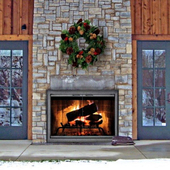

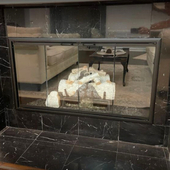


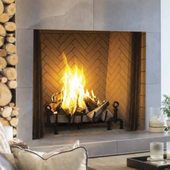

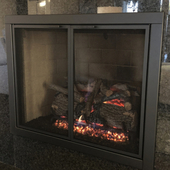






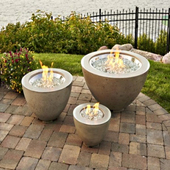























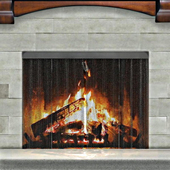










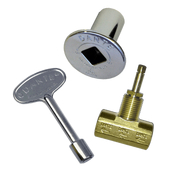



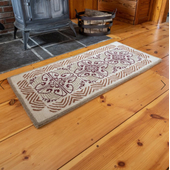
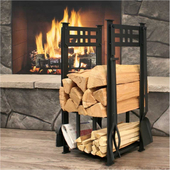






















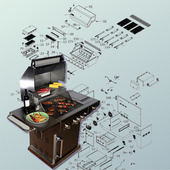
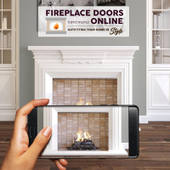
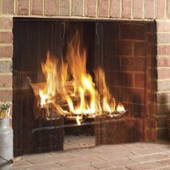


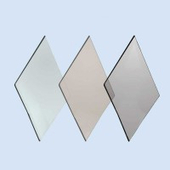


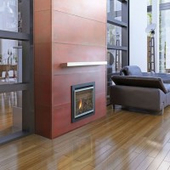

















.png?1645722398353)



